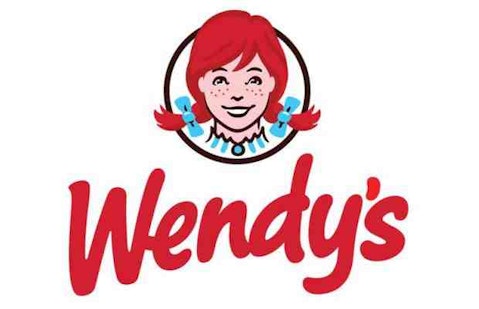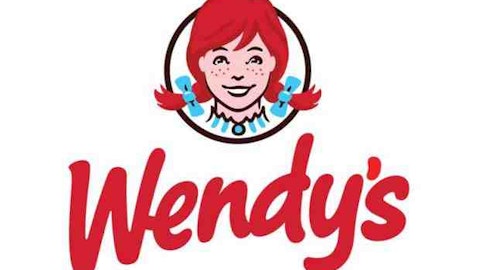Last week, The Wendy’s Company (NASDAQ:WEN) announced in its second-quarter earnings report that it will sell 425 company-operated stores to franchisees. This will reduce the number of company-owned and -operated stores in the Wendy’s system from 22% to 15%. Coupled with earnings that beat expectations, Wendy’s stock rose more than 8.5% on the day of the announcement. After a few years of rather aimless wandering while McDonald’s Corporation (NYSE:MCD) increased its dominance, and Burger King Worldwide Inc (NYSE:BKW) returned to the public markets courtesy of merger-savvy Brazilian billionaires, is Wendy’s poised to excite investors again?

The Wendy’s Company (NASDAQ:WEN) decision to reduce its ownership stake in branded restaurants to roughly one out of every seven locations is indicative of a trend toward greater franchising in the quick service restaurant business. In the industry, selling existing company stores to franchisees is known as “refranchising.” In Wendy’s case, it is selling the restaurants to some of its most capable franchisees, in order to convert these restaurants to a higher-end concept as part of a half-billion dollar initiative the company calls its “Image Activation Program.”
The Wendy’s Company (NASDAQ:WEN) management highlighted the advantages of decreasing company-owned stores in its earnings announcement, and the reasons fairly define the industry’s interest in this trend. CEO Emil Brolick stated the following in regards to updating locations and refranchising:
We expect to generate a higher operating margin and stronger free cash flow, along with further enhancing the quality of our earnings with a more predictable revenue stream from a higher percentage of royalty and rent income. We believe system optimization will also enable us to increase our long-term earnings-per-share growth rate and return incremental cash to shareholders in the form of dividends and share repurchases. …
Risks of a refranchising strategy
Shifting overhead to franchisees indeed improves margins and can open up free cash flow. But this strategy is not without significant risks. Company-owned stores are the proving ground for a restaurant’s concept. Company locations provide a working laboratory for a fast food operator to study menu and operational innovations; develop best practices in speed, quality, and safety; and collect data to assist marketing in each geographical region. Having its own stores interspersed among franchisees in every geographic location helps a franchisor understand both the challenges and opportunities facing its independent operators.
Ceding too much authority to franchisees can ultimately affect the bottom line. Without an appreciable independent source of revenue, a franchisor has little leverage if franchisees balk against a pricing strategy or disagree with menu development.
The big experiment in this arena is being undertaken by Burger King Worldwide Inc (NYSE:BKW). Burger King is moving toward a 100% franchisee model. Currently, 97% of its locations are owned by franchisees, and it expects to reach the 100% mark by the end of the current fiscal year. The company is quite candid about the potential weak spots in its strategy:
Our franchise dominated business model also presents a number of drawbacks and risks, such as our limited control over franchisees and limited ability to facilitate changes in restaurant ownership. In addition, our operating results are closely tied to the success of our franchisees, and we are dependent on franchisees to open new restaurants as part of our growth strategy.
Balance is key
About a decade ago, McDonald’s Corporation (NYSE:MCD) owned three out of every 10 restaurants in its system.The company whittled this ratio down for many of the same reasons that The Wendy’s Company (NASDAQ:WEN) and Burger King Worldwide Inc (NYSE:BKW) have pursued their respective strategies. The proportion of company-owned stores to total stores was reduced to the 20% range, and it has held steady at between 19% and 20% for the last five years.
So what is a good ratio of company-owned stores to franchisees? There is no single formula due to the differences in business models. Burger King Worldwide Inc (NYSE:BKW) may succeed in a 100% franchise model as it is setting up joint ventures with franchisees around the world, thus retaining a modicum of control. McDonald’s Corporation (NYSE:MCD) ratio of one out of every five system restaurants seems a balanced number. It’s hard to predict how much lower than this proportion McDonald’s can go and still retain its famous edge of consistency of product. This is why I am personally skeptical of The Wendy’s Company (NASDAQ:WEN) drive to reduce its company-owned stores all the way down to 15%.
Watch this trend going forward
In some ways, the push toward refranchising can be seen (somewhat) as taking the easy way out. The traditional fast food burger franchises have struggled for some years with competition from higher-grade, healthier dining options. Refranchising presents a novel way to achieve to bump up shareholder returns as it relieves companies of overhead. But in taking very important operational skin out of the game, the giant fast food chains may be further diminishing their ability to discern the appropriate mix of value, ambience, menu, and price to compete long-term with an ever-growing number of affordable dining options.
The article Investors, Beware This Growing Fast Food Trend originally appeared on Fool.com.
Fool contributor Asit Sharma has no position in any stocks mentioned. The Motley Fool recommends Burger King Worldwide (NYSE:BKW) and McDonald’s. The Motley Fool owns shares of McDonald’s.
Copyright © 1995 – 2013 The Motley Fool, LLC. All rights reserved. The Motley Fool has a disclosure policy.




